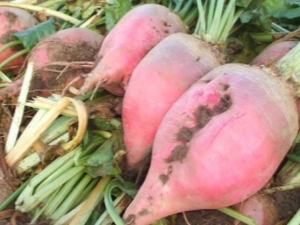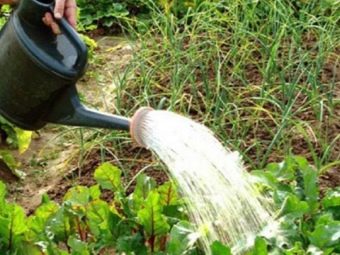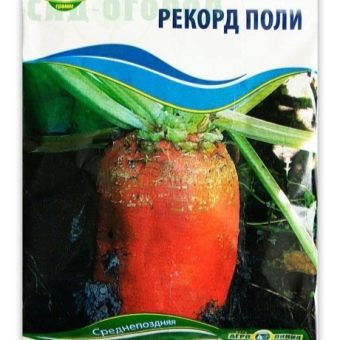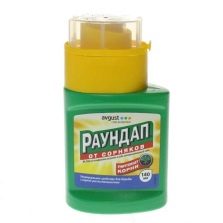Fodder beet: the characteristic and rules of cultivation

Fodder beet is a real "lifeline" of many farmers.Today we look at the main characteristics of this culture, as well as learn how to grow it properly.
Special features
Fodder beet is a biennial herb of the amaranth family. In the first year, she formed basal leaves and fruit with thickening, and by the end of the second - shoots with peduncles. Beets contain minerals, pectins, carbohydrates and vitamins. In cereals 15-16% less protein than in the leaves of the plant.
The shape and color of the fruit depends on the variety that the farmer has chosen for sowing. They can be red or orange. As for the form, it can be bag-shaped, cylindrical or in the form of a cone with a long root. There are drought-resistant (with a projection from the ground in half, two-thirds of the parts) and sugar varieties.
Advantages and disadvantages
Fodder beet - an edible plant. Gardeners rarely plant it on the beds, because they classify it as a category of difficult-to-digest and hard-to-digest vegetables. What is a minus for people, plus for cattle. In winter and early spring, when there is snow on the fields, she saves goats, cows, chickens, rabbits from starvation and a lack of vitamins. In their stomach, such a beet is easily digested and completely absorbed. It is steamed and then added to chopped straw or chaff to prevent excessive acidity of the gastric juice in cattle.
For cattle separately harvested tops, which are fed after the bevel or dried for winter feeding. They are rich in organic acids, minerals, vitamins, necessary to enhance reproductive function. The composition of the beet a lot of free amino acids, alkaline elements, carbohydrates (sucrose). Unlike other root crops, vitamin C, carotene and B vitamins are few.
Pros:
- ideal milking agent that does not harm the health of cows;
- helps to increase milk production in cows, goats;
- high yield;
- the possibility of using parts of the plant in feeding birds and livestock.
Minuses:
- not everywhere growing: the field for planting is chosen carefully, avoiding saline, too acidic soils and marshy soil;
- can not be grown on one field more than 2-3 years in a row;
- necessarily fertilize the soil before planting seeds and during the growing season;
- needs abundant watering during growth.
What is different from sugar?
Sugar beets are used to extract sugar, and cattle are fed fodder. Sugar is valued for the abundance of sucrose in the composition, and fodder fruits for the abundance of protein. Different chemical compositions cause the difference in the use of crops.
External differences
Do not confuse one type of beet with another. Feed looks visually different than sugar. Its root crops of red or orange hue take the form of a circle, an oval. Fruits rise above the ground, hiding behind thick tops, formed by the green leaves of an egg-shaped form.
Long root vegetables of white, gray, beige color, inherent in sugar beets, are hidden under the ground. They are framed by green dense tops, formed by leaves on long petioles.
Growing conditions
Sugar beets ripen in 140-170 days, and fodder a month faster - in 110-150 days. Both types of beets are cold-resistant. They have an identical vegetative system. When flowering on thick peduncles, inflorescences grow, in which 2-6 small yellow-green flowers are hidden.
Composition
Sugar beets contain up to 20% of sugar in the dry residue. This is its main difference from the feed. Both varieties are rich in carbohydrates, but sugar is absent in protein, which is abundant in fodder. In addition to protein, it contains milk-containing substances, fortified components, fiber and minerals. Farm owners grow her and then feed her cattle and poultry for the whole winter / spring.
Application
Sugar beet is a technical crop used to produce sugar. The remaining parts of the processing feed the cattle, and from the defecation mud produce lime fertilizers.Animals are fed with fruits, dried or fresh tops.
Popular varieties
Of all the varieties in Russia, the following are widespread:
- "Ekkendorfskaya yellow";
- "Record Poly";
- Tsentuar Poly;
- Ursus Pauly;
- "Brigadier";
- "Lada and Milan".
"Ekkendorfskaya yellow"
This variety is a successful selection, bred by experts from Russia. It is considered highly productive and fruitful. 100-150 thousand kg of vegetables are dug from one hectare after 140-150 days from the moment of sprouting. Their weight varies and reaches 2 kg.
A pale yellow cylinder-shaped beet with a gray head "sits" in the ground for one third of its length. The flesh of white color is very juicy, and the dry matter in it is only 12%. Farmers are sowing beets of the "Ekkendorfskaya yellow" variety in the fields, because they are distinguished by the following special features:
- unpretentiousness to the quality of the land;
- high resistance to the formation of arrows;
- the ability to survive short frosts;
- long storage;
- even and with good nutritional properties of the fruit.
"Centuar Poly"
"Tsentuar Poly" is a multi-stem semi-sugar variety from Polish breeders. White roots in the form of an oval are harvested 145-160 days after the shoots are noticed. Their weight is up to 2 kg. Beetroot of this variety easily tolerates drought, is not susceptible to chilli and tsvetushnosti.
About 1 thousand centners of root crops are harvested from 1 ha. They are stored in warehouses and basements at low temperature.
"Record Poly"
This variety is a multi-seed hybrid with medium ripeness. From the moment of emergence to harvest, 80-123 days pass. Root crops weight - up to 5 kg. The color of the flesh is pinkish (almost white). They have a cylindrical shape. The fruits do not sit deep in the soil. Because of this, the harvest is harvested by hand: from 1 hectare to 1,250 thousand centners of root crops. It directly depends on whether the farmers applied fertilizer or not.
"Ursus Pauly"
The weight of the root beet fodder beet varieties "Ursus Poly" reaches 6 kg. They dig up a maximum of 135 days from the time of emergence.
- their shape is cylindrical;
- color - bright orange;
- the creamy pulp is full of juice.
At 40%, he sits in the ground, which contributes to low pollution of the earth during harvest. Up to 1,250 thousand centners of beets are harvested from 1 ha.
"Brigadier"
Variety "Brigadier" appeared through the efforts of specialists from Germany. It refers to a polyploid species. Usually, a 3-pound beet is harvested after 108-118 days from the moment of emergence. They have a cylindrical, elongated shape, smooth olive-orange leaf plate. The yield per hectare is up to 1500 centners. In the pulp of yellow-white color there are a lot of sugars and dry residue. The grade "Brigadier" is distinguished by excellent commercial quality, long storage. Drought does not affect the growth of beets.
Lada
Belarusian farmers bred Lada. It is considered to be single-growth and fruitful. These roots have a built-up base, which distinguishes them from the others described above. Some vegetables weigh 25 kg. The skin of the root is pinkish-green, and the flesh is white and juicy.
"Milan"
This variety is grown in the Black Soil. Beets are 50% recessed into the soil. The pulp contains up to 13% of sugars. From 1 hectare from 784 to 1400 centners of crop is harvested.
How to plant?
Connivant approach to the cultivation of fodder beet is unacceptable. Without choosing a suitable plot with special care, without clearing it from weeds, refusing to apply fertilizer, you cannot harvest a decent harvest in the fall.
Site selection
For planting fodder beets are prepared ahead of time. In the fall, choose and prepare the site.
- with fodder crop rotations, the area where they used to grow oats, peas, melons, corn for silage;
- during field crop rotations, the choice is stopped on land plots where legumes, cotton, potatoes or winter crops were previously grown;
It is advisable to avoid planting in a place where perennial herbs were grown.
Soil preparation
Farmers who have sown seeds in a marshy, sandy or clay soil will not collect a decent harvest. There is no question of seeing shoots on stony ground. Fodder beet grows well on slightly acidic with a neutral reaction or on slightly saline soil. It is sown on rich black soil and in floodplains. Before planting the selected area weed, removing all weeds, carry out a thorough preplant treatment. The weaver, euphorbia, nightshade, henbane, shepherd's purse, swan are pulled out by the method of weeding.
With the active growth of thistles and wheatgrass, it is treated with non-selective herbicides (“Uragan”, “Buran”, “Roundup”).
- 20 ml of concentrate "Hurricane" is diluted in 3 liters of water, and then they are treated with weeds with two fully formed leaves;
- a stronger effect on the weeds of Buran, which is suitable for use in aeronautical spraying;
- The Roundup herbicide can be effectively used both before and after planting 3-5 days before germination.
Features fertilization
During the autumn digging they fertilize the site with manure or humus, keeping the concentration: 35 tons of organic matter per 1 ha. It is fertilized, introducing 5 hectares of wood ash per hectare. Pre-do not sow the seeds in boxes at home. They are planted in open ground, but before that nitrogen, phosphorus and potassium are introduced into the plowed areas. This allows you to make the earth loose, moist and with small lumps.
Sowing seeds
Seeds are trying to plant in the period from late March to mid-April. By the time the soil warms up to + 5-7 ° C at a depth of 12 cm. This is due to the fact that fodder beet ripens in 125-150 days from the day the shoots appear.
On day "X", the seeds are treated with a disinfecting agent, for example, with a saturated solution of potassium permanganate. It put the seeds for half an hour before landing in the ground. Helps to accelerate growth, as well as affect the growth density of growth stimulants.
Before planting, beet seeds are dried, and then planted into the ground, following the following scheme: they are not buried more than 5 cm, planted at a distance of 0.4 m from each other and between the rows. If such planting scheme is observed, the seed consumption will be 0.15 kg per 1 sq. M.
Seeds sprinkled with earth, compacted with a roller, if the soil is dry. This contributes to the fact that the moisture from the bottom rises to the surface.
Weather conditions affect germination. If the temperature is around + 8 ° C, they will appear on the 12th day.
Subtleties of care
To prevent the emergence of weeds at the site, it is treated with herbicides for 3-5 days before germination. In the first month they develop slowly. The task of the farmer is to thin out plantings when the first true leaves appear, leaving 5 shoots at a distance of 25 cm from each other in each running meter.
In the first month and until the end of the growing season, the plant is properly looked after. Watering combined with fertilizing ammonium nitrate. After 2 weeks it is necessary to feed him with mineral fertilizers.
When to harvest?
By the end of the summer or early September, the development of the beet stops. She does not form new leaves, and the old ones fall. It does not need moisture, reduce watering so as not to impair the taste of the vegetable. According to reviews of farmers engaged in the cultivation of crops is not the first year, the optimal time for digging up is to extreme cold in autumn.
A shovel or pitchfork is used for undermining of root crops. After digging them, they remove the ground from the fruit. The tops are cut, dried and cleaned in the cellar, making sure that the temperature in it does not fall below + 3-5 ° C.
Diseases and pests
Farmers neglect tillage / fertilize soil before planting beets. They do not care for seedlings, not watering or fertilizing them with organic compounds for better growth and higher yields. Due to the connivance, the harvest in the autumn is collected scanty. The plant infects fomoz, chalcosporosis, kagatnaya rot and root.
Corneed
Corneed is a disease of young plants.Under knee knee and roots rot, and then die. You can not reverse the process, but you can warn him if you take care of the thorough preparation of the soil for planting. It is fertilized with humus and ensure that it is not hydrated in excess. Something does not depend on farmers: they are not able to influence weather phenomena, to prevent frost or sudden changes in temperature.
Cercosporosis
Because of this disease beet leaves are affected. They notice bright round spots covered with a dark red border, the size of which is from 0.2 to 0.6 cm. After the rain, the spots turn gray, becoming more like a bloom.
Fomoz
At the end of the growing season, the beets are affected by fomoz. It does not harm the plant itself, but penetrates deep into the fetus, causing the core to rot. Fomoz observed in the fields, which before planting is not fertilized with boron (3 g of borax per 1 sq. M).
To prevent it, before planting the seeds are soaked in a chemical preparation "Polycarbocin".
Kagatnye rot
The disease affects the beets during storage. Its pathogen is bacterial or fungal rot. To prevent an infection process inside the fetus, from time to time a longitudinal section is made in it. If at the cut they see bands of dark color, then the infectious process has begun. Sometimes they do not control storage, which is why they discover the disease too late: when a gray or white deposit is released from the fruit when pressed. Kagatnye rot affect culture due to improper temperature and humidity in the place of storage.
For pests, fodder beet is a tasty morsel. She is loved by the larvae of the click beetle, who do not care what they devour. They do not hide the tubers, seedlings, as well as the established roots of plant culture. If at least one larva is noticed on the leaves, complex measures for their cleaning begin immediately. To pest sided plant plant, do not depart from the rules of soil preparation and planting. Do not disdain treatment with herbicides, if previously there was wheat grass in the area.
If the larvae appeared, despite the measures taken, then to discourage their interest in the plant can be strung carrots and potatoes on a stick.
On beets sometimes see aphids. Leaf aphid feeds on the juice from the leaves, and they gradually curl. Root aphid, which appeared in the roots, damages the roots, as a result of which they greatly decrease in size. To get rid of this pest, spray planting tobacco decoction with soap and water.
The inner part of the leaf plate is a tasty prey for small bug-jumpers. This is beet flea. They make through holes in the leaves, and barely ascended shoots die, and not turning into an adult plant. The main thing is to take action, noticing the first holes on the leaves. First, shoots weed, and then treated with ashes, tobacco or lime.
Effective protection from the mining flies - accommodation near the beds (fields) of fodder beet of garlic ridge. The smell of garlic is afraid of an ash-colored fly. Because of him, she does not lay eggs on leaves. If the garlic is not planted near the fodder beet, then 2-4 times per season, it is weeded and pollinated with Hexachloran.
On the rules of storage of fodder beet, see the following video.





























































